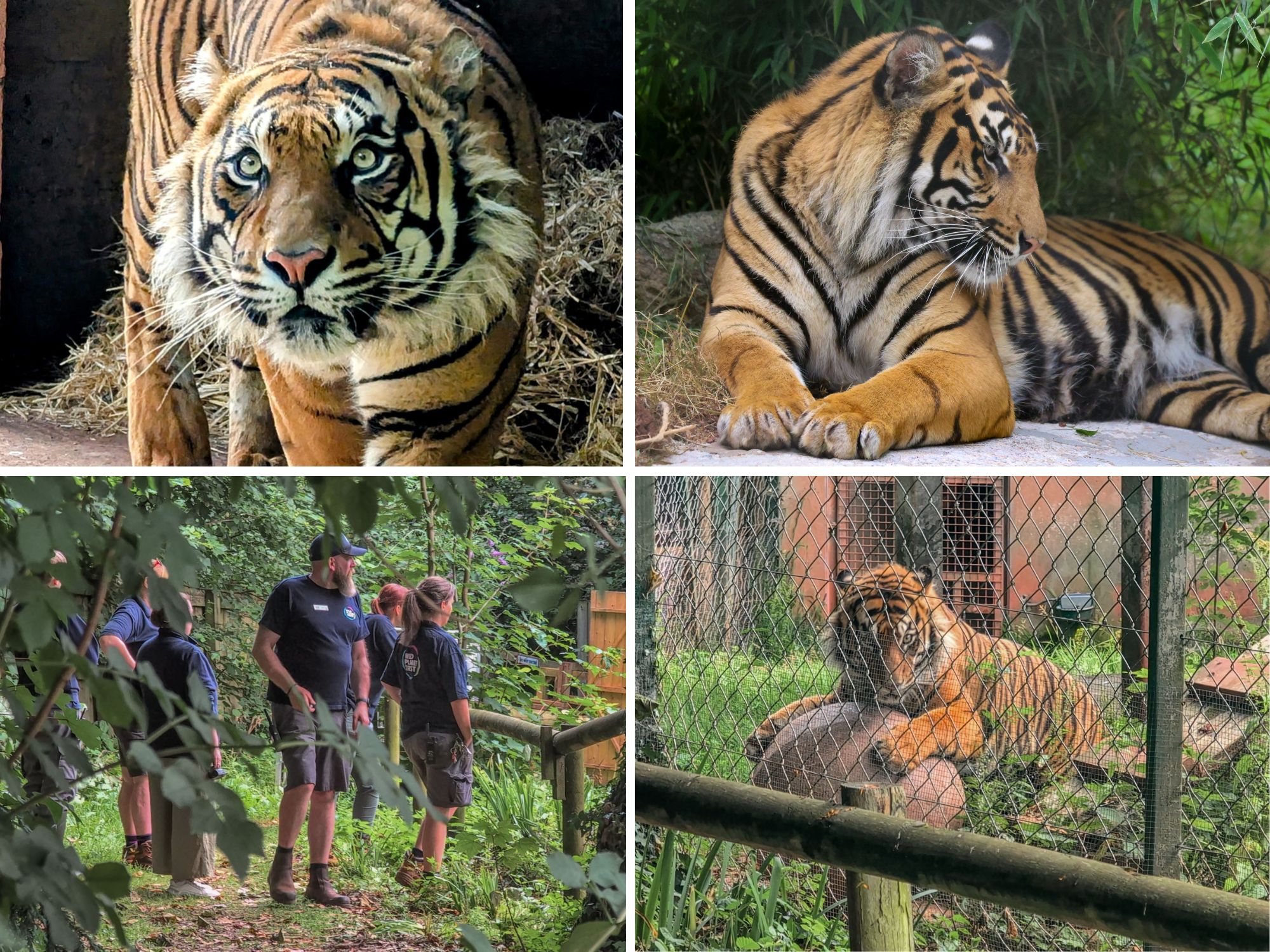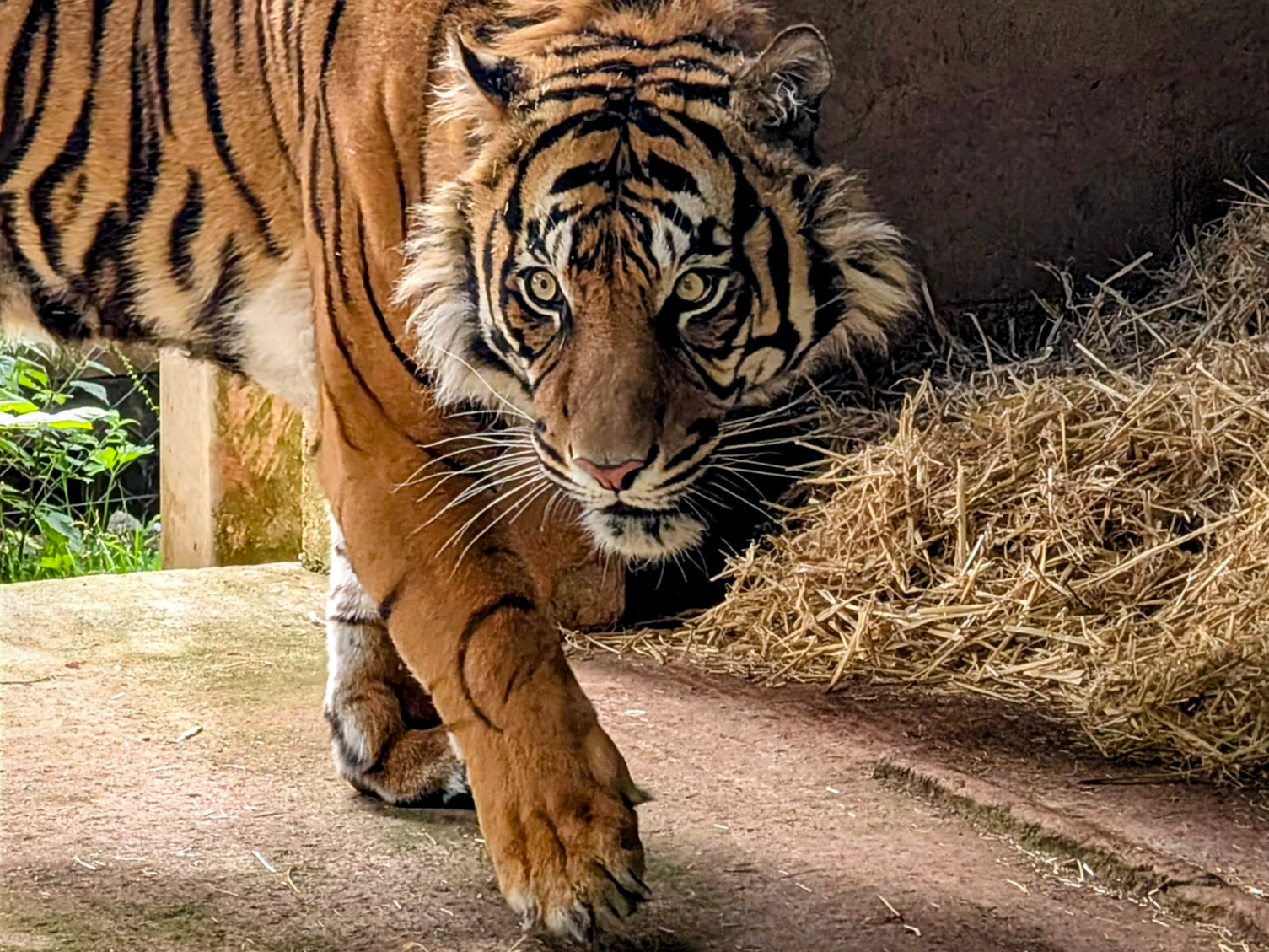
MEET DAO: THE YOUNG MALE TIGER SET TO BECOME PAIGNTON’S CONSERVATION STAR
Paignton Zoo’s new Sumatran tiger could father multiple litters for critically endangered species.
Paignton Zoo has welcomed Dao, a striking 3-year-old male Sumatran tiger from Fota Wildlife Park in Ireland, offering visitors the rare opportunity to see one of the world’s most endangered big cats as he settles into his new Devon home.
With fewer than 400 Sumatran tigers remaining in the wild, Dao’s arrival marks the beginning of an exciting conservation chapter that visitors can follow. The coordinated exchange with Ireland represents a strategic step in the European breeding programme for this critically endangered species, with every pairing carefully planned to maximise genetic diversity.
Lisa Britton, Head of Living Collections for Paignton Zoo, commented:
“The tiger that visitors can see in the main enclosure right now is our resident female, Carrie. Dao’s currently finishing up his quarantine – he’s got lovely spacious accommodation with indoor and outdoor areas, climbing frames, and plenty of enrichment to keep him busy.”
Tigers are naturally solitary animals, only coming together in the wild during mating season. To ensure both animals’ welfare and provide optimal viewing opportunities, Dao and Carrie will use the main exhibit on alternating days once Dao completes quarantine.

Carrie, who has successfully contributed to conservation efforts during her time at Paignton, will be transferring to another EEP accredited zoo within the next few months as part of the coordinated breeding programme. This carefully planned move ensures she continues playing a vital role in Sumatran tiger conservation while making way for Dao’s future breeding arrangements.
At just 3 years old, Dao has many breeding years ahead. Over the next 6-12 months, conservation experts will identify a genetically compatible younger female tiger to join him at Paignton. This scientific matching process, overseen by the European Association of Zoos and Aquaria (EAZA), ensures the healthiest possible offspring for future generations.
Lisa continued:
“Dao’s young age means we have the potential to welcome multiple generations of cubs over the coming years, each one representing hope for this magnificent species’ survival. With habitat destruction and poaching continuing to threaten wild populations, visitors can see conservation in action and understand their role in supporting these vital efforts.”

The timing of Dao’s arrival perfectly coincides with exciting improvements to the tiger facilities, offering visitors an enhanced experience during the busy summer season.
The tigers’ home has recently been significantly enhanced with a brand-new pool and water feature. This exciting addition allows visitors to witness natural tiger behaviours, as these impressive predators are excellent swimmers who often hunt and cool themselves in water in the wild.
Sumatran tiger conservation
- Fewer than 400 Sumatran tigers remain in the wild
- Habitat destruction and poaching continue to threaten wild populations across Indonesia
- Coordinated breeding programmes in zoos contribute irreplaceable genetic diversity to global conservation efforts
- Breeding arrangements are recommended by the European Association of Zoos and Aquaria (EAZA) studbook holder and involve regulatory bodies including CITES, APHA, DEFRA, EAZA EEP, and International Trading Regulations
- Visitors often confuse pacing in tigers as a sign of distress – this is in fact instinctive territorial behaviour that helps tigers maintain mental stimulation and physical fitness – this is how they naturally survey their environment
- Signs of a healthy, content tiger include regular eating, social interaction with keepers, play behaviour, and natural pacing patterns


